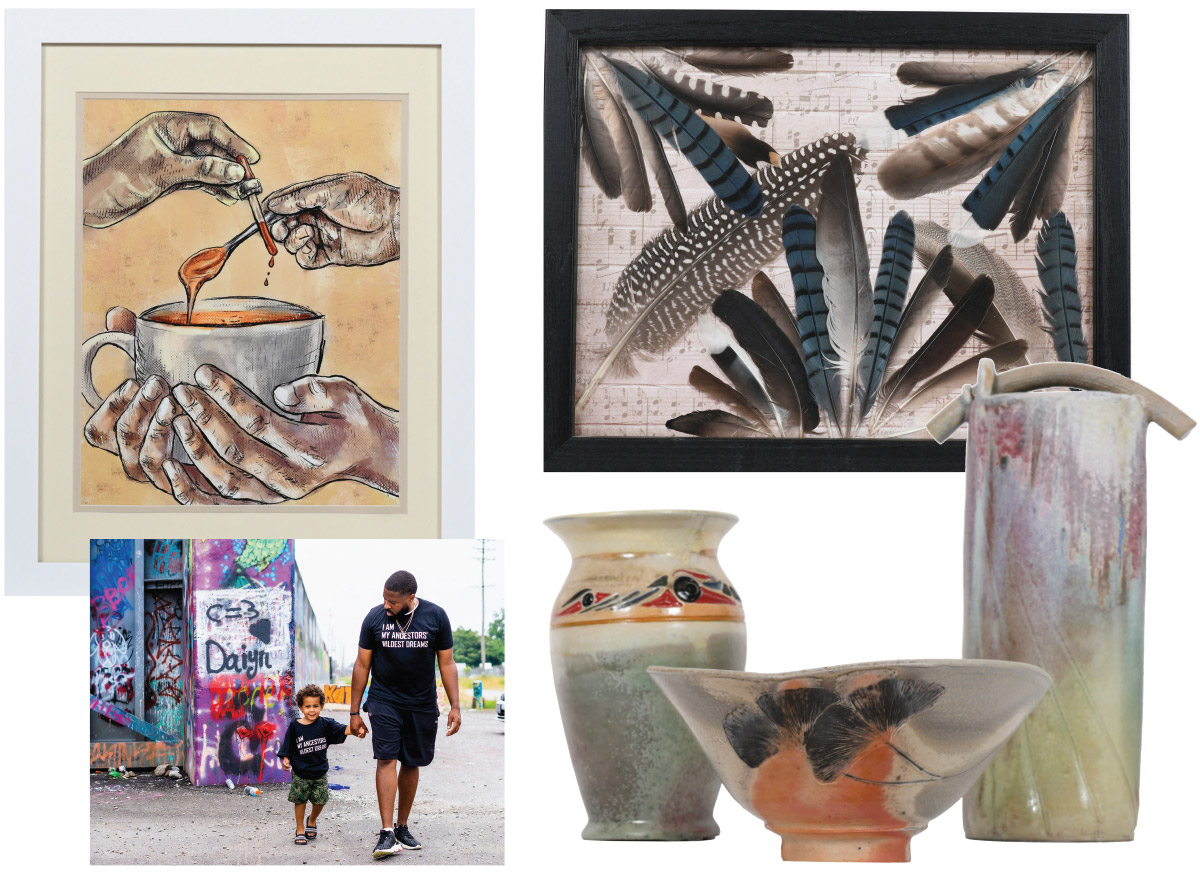Art Close-Up: Schingoethe Center’s New Curator Launches Virtual Exhibits
The pandemic sparks a wave of creativity among the AU community and local artists.
In February, the exhibit “Figurism” opened at Aurora University’s Schingoethe Center, showcasing the many ways that Illinois artists envision the human body. By March, the museum closed to the public due to the pandemic, and the exhibit’s figurative bodies quarantined and socially distanced, just like everyone else.

Natasha Ritsma, who had been in her new role as director of the Schingoethe Center for less than six months, was thrown for a loop. The COVID-19 pandemic imposed its will on her new job — the exhibit was delayed, and all accompanying events were canceled. But that didn’t stop Ritsma, who had previously worked as curator of Loyola University Museum of Art, from moving forward with her plans.
Even before the pandemic, one of Ritsma’s priorities was to digitize the 4,000 objects in the Schingoethe Center’s collection. The pandemic simply made the digitization process more urgent.
“Digitization is essential for art museums today,” Ritsma said. “Many museums are producing engaging and fascinating content, strongly based on their own collections. It’s a great way to educate people about art. Even when there’s no pandemic, people can listen to a fascinating lecture during lunch or see a renowned exhibit amid a moment of boredom.”
With the museum temporarily closed to the public, the Schingoethe team got to work digitizing the collection and adding online programming. They focused on short and engaging exhibits suited to capturing the attention of virtual visitors.
One of their first digital projects was to mark the historic pandemic through local art. Ritsma and her team, in partnership with the Phillips Library, reached out to the AU community and local artists in search of objects created in the early days of the COVID-19 era, when people were stuck in their homes, and arts and culture programming had come to a standstill.
The result is “Art in the Time of Coronavirus,” the museum’s first online exhibit, running through Feb. 26, 2021.
More than 30 artists — both professional and amateur, across an array of mediums — submitted about 60 pieces to the exhibit, a large response that surprised and delighted Ritsma. Each artist also submitted a self-made video, available for online viewing, explaining the work and the inspiration for its creation.

“The artists used this time to meditate and create work that is really, really beautiful,” Ritsma said.
Kristen Bilbruck ’11 created the mixed-media assemblage “Birds of a Feather Quarantine Together” with sheet music and bird feathers she found on walks with her daughter. Photographer Amy Nelson ’19 submitted a photo of her husband and son walking together in matching T-shirts on Father’s Day, a moment of love and normalcy.
Local digital media artist Devin Trier created a tongue-in-cheek version of the famous Uncle Sam poster. Trier starts with the famous slogan “I Want You for the U.S. Army” and instead depicts Uncle Sam behind a tape measure saying “I Want You Six Feet Away.”
As for the online version of the “Figurism” exhibit, the Schingoethe staff created a program to take viewers on a digital tour of the art installation. Doug Stapleton, the Illinois State Museum curator behind “Figurism,” spoke on video from the Schingoethe Center about significant pieces from the exhibit. His hour-long tour is broken into three-to-six-minute clips, allowing viewers to select the art objects they want to explore.
“Figurism” includes works made by more than 50 Illinois artists from 1908 to the present, and features paintings, prints, drawings, photographs, and sculptures. The collection brings together artwork that emphasizes the power and the range of the narrative and expressive human figure in Midwestern art. Artists featured include Gertrude Abercrombie, Ivan Albright, Phyllis Bramson, Eldzier Cortor, Hector Duarte, Indiana Gyberson, Mr. Imagination, Riva Lehrer, Marion Perkins, Marva Lee Pitchford-Jolly, and Ed Paschke.
Ritsma aims to have highlights of the museum’s permanent collection online by January 2021, and add more pieces — both online and to the physical collection — in the following months and years. When the museum reopens to the public next year, she also plans to bring in more traveling exhibits, prominent scholars, and members of the AU community.
Whether the AU community engages online or in person, Ritsma wants them to see the museum as a resource, a place where students, alumni, and anyone else from the local area can come together, enjoy art, and learn something new.
And although the pandemic has presented a big challenge, Ritsma is inspired to see the power of art and creativity come alive in the AU community.
“Some of the best art is created during some of the most difficult times,” Ritsma said.
To visit the online exhibits, go to aurora.edu/virtualexhibits and aurora.edu/coronavirusart.